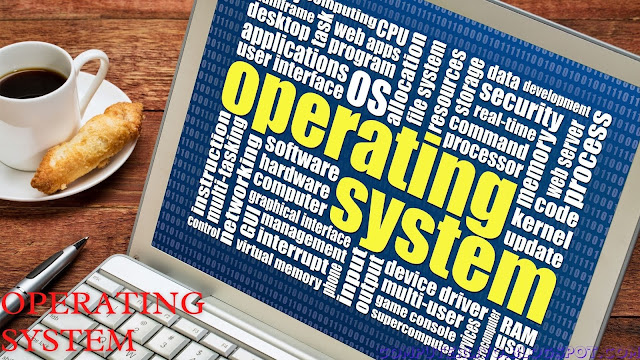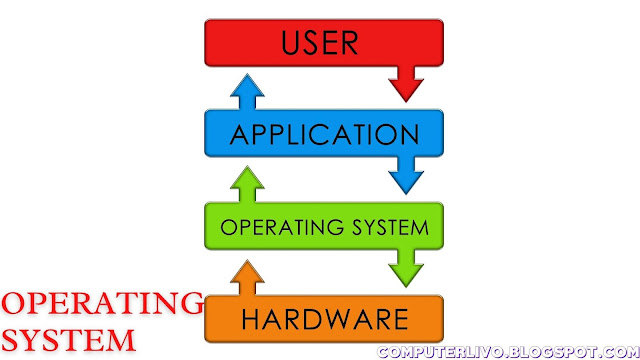In this article, you will know what is an operating system? (What is Operating System ). Just imagine how easy it is to use a computer today, would it be as easy as it was fifty years ago. Not at all, but even one percent of the activities that modern computers do, could not be done by those systems.
This is the reason, that we see the operating system as an important invention of the computer. Earlier computers were very cumbersome; It was not possible for the same person to use them. If you had to do any work through the computer, then there was an operator for it, which used to input your program into the CPU.
That is to say, there was no direct interaction between a user and a computer. The Operating System was invented while solving this problem. Although it was not able to win today's OS, it did modernize the computer a bit. So let us now come to the topic and first of all know, what is Operating System? Then you will understand the rest of its aspects.
What is Operating System – What is an Operating System?
Operating System or "OS" is the system software, which acts as an interface between the user and the computer. That is, manages hardware and software programs. In very simple words, it is the system software, which helps you to communicate with the computer, without having to learn the computer language.
The purpose of an operating system is to facilitate the use of a computer. The user needs an operating system to run other programs in any computing device (desktop, laptop, smart-phone and tablet, etc.). Examples of some well-known OS: Windows, Android, iOS, macOS, Linux and Chrome OS, etc.
Specifically, the job of an operating system is to protect the user from the complexity of hardware and to manage computational resources. When we turn on the computer, the OS is loaded from the hard disk into the main memory by the CPU. After the OS is started in the computer, it works to start other application programs and manage the hardware resources required for them. The concept of OS was first introduced to manage tap storage in the 1950s.
An operating system can also be understood from the following definitions:
1. Operating system is the most basic program within a computer system, which acts as an intermediary between the program and hardware parts for hardware tasks such as input/output and memory allocation.
2. It is a special type of software, which controls and monitors the execution of all the programs available in the computer. These programs include applications and other system software.
3. The OS is an integrated system of programs that monitor the operation of the CPU. The system controls the input/output and storage functions of the computer and provides various support services.
4. OS is a system software, with the help of which users are able to use the computer in an easier and better way.
5. An operating system is a program that manages the hardware and other software on a computer.
operating system requirement
The following points that indicate the need for an operating system:
There are many processes running in a computer at a time, and all of them require a central processing unit and computer memory to execute. The operating system supplies these resources to all the processes. That is why it is also called Resource Manager.
It is almost impossible for a user to use a computer system without any operating system. Because many processes run simultaneously on executing a program, which is not easy for a human to manage.
The OS creates a communication link between the user and the computer, so that the user can run any application program properly and get the required output.
You use your mouse to open the application and click on the menu. All this is possible thanks to the modern operating system. With the help of GUI (Graphical User Interface) you get permission to do this.
Operating System helps the user in file management. Through this, the user can save the data in a systematic way according to his needs.
Multitasking is an extremely important feature of an operating system. With its help, we are able to run many programs at the same time.
OS provides a platform to run any application program in the computer. Due to which we are able to do our work with the help of that application.
Apart from this, there are many such features of the OS, due to which we are able to take the benefits of modern technologies. So let's now have a look at some important functions of Operating System.
Functions of Operating System – Functions of Operating System
By now you must have known how important the operating system is for a computing device. Many important functions are performed by the OS for these devices. The various functions performed by the operating system are as follows:
Process Management
As we know, CPU can execute only one process at a time. But we are able to run multi-programs simultaneously in our computer. This is because the OS allows those processes to run in a multi-programming environment. That is, the operating system decides when and for how long all the processes ready for execution will access the CPU.
This feature of the OS is called Process Scheduling. Apart from this, it monitors the status of the process and the processor, and when the process is complete, deallocate the processor (CPU). The program that monitors the status of the process and the processor is known as the traffic controller.
Memory Management
Memory management is a major function, which is performed by the operating system. Whenever we execute an application or program, it is first loaded into the main memory of the computer. Now if we execute many programs at a time, all of them will require memory. Here the main memory is managed by the operating system.
Main memory is closely connected to the CPU, so the interaction and moving data in and out of the processor is very fast. In multi-programming, the OS makes sure that the memory can be used by all the processes so that the system can function well.
An operating system performs various functions for memory management. For example, keeps track of memory, that is, which part is in use by which process, and which part is not; Allocates memory when a process requests memory, de-allocates memory when the process no longer needs it or the process terminates.
Hardware Management
Each hardware device performs a different function. But the OS manages the device communication with the help of its respective drivers. There is a separate driver for each hardware device. These drivers enable communication between software and hardware to succeed.
All the hardware devices connected to the system are kept track of by the OS. For this a program called I/O Controller is used. The OS decides which process will access a particular device and for how long. Apart from this, the operating system allocates hardware devices in an effective and efficient manner.
File Management
So that the files present in the computer can be used with easy navigation, we organize them in directories. Under which an Operating System plays an important role. For example the OS sees where the data is stored, as well as helps in finding resources. These collective features are often referred to as file systems.
Security
The OS ensures that only the user has access to the computer and its data. Password protection and other techniques are used by the operating system to do this. Data is an important part of any computer system. If it is accessible to another person, they can illegally use and manipulate the data.
provide user interface
The operating system acts as an interface for the user to use the computer resources. This can be a Graphical User Interface (GUI), in which the user clicks on an on-screen element to communicate with the OS; Apart from this, it can be Command-Line Interface (CLI), in which the user gives commands to the OS to perform the task.
view system performance
The Operating System keeps an eye on the overall performance of our computer, as well as keeps telling us the status of the CPU. With its help, we can see how busy our CPU is, or how quickly our hard drive recovers data, etc. The job of an operating system is to record all the activities happening in the system.
error out
To avoid system failure, the OS continuously detects the errors coming in it. The operating system uses various methods to detect the error.
Types of Operating System – Types of Operating System
The following are some of the most widely used types of operating systems:
- Batch Operating System
- Multiprogramming Operating System
- Multitasking Operating System
- Distributed Operating System
- Network Operating System
- Real-Time Operating System
- Time-Sharing Operating System
- Multiprocessing Operating System
To know in detail about all these operating systems, read this post – Types of Operating System
Goals of Operating System in
The main goal of an operating system is to provide a simple and user-friendly environment. For example, if you had to understand how an operating system works before using a computer. So guess what, it would have been convenient for you. That's why the OS has been made so easy, that anyone can use it very easily. Along with this, being user-friendly for an operating system is also an important goal.
Conclusion
In this post, do you know what is the operating system? (What is Operating System ). Hopefully, after reading the post, you must have got complete information about the operating system and its working. Apart from this, if you have any questions or suggestions, then please tell through the comment below.
In the end, if the post is informative, then please do share it on social media, so that this information can reach other people through you.



0 Comments